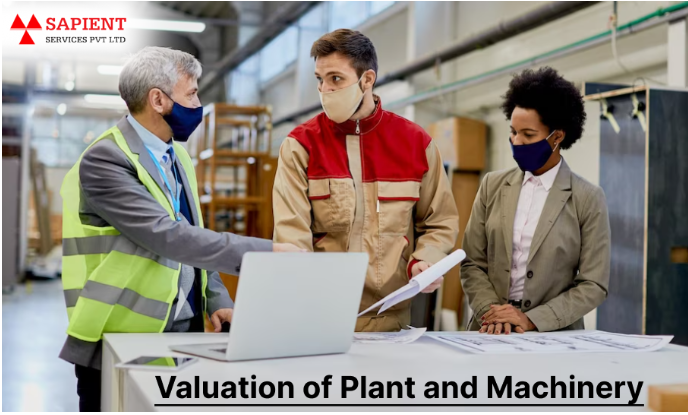
Introduction:
In the realm of asset valuation, the assessment of plant and machinery holds a significant place. Whether for financial reporting, mergers and acquisitions, insurance purposes, or taxation, accurately determining the value of plant and machinery is crucial for businesses across industries. In this comprehensive guide, we delve into the intricacies of valuation methodologies, factors influencing valuation, challenges faced, and the importance of professional expertise in this domain.
Understanding the Importance of Valuation:
Plant and machinery encompass a wide array of tangible assets utilized in industrial and manufacturing processes. These assets include equipment, tools, vehicles, and other machinery critical for production. The valuation of plant and machinery serves several key purposes:
-
Financial Reporting: Accurate valuation ensures that a company’s balance sheet reflects the true value of its assets, providing stakeholders with transparent financial information.
-
Mergers and Acquisitions: During mergers, acquisitions, or divestitures, understanding the value of plant and machinery aids in negotiating fair deals and assessing the overall worth of the business.
-
Insurance Purposes: Adequate insurance coverage relies on valuing plant and machinery correctly to mitigate the risk of underinsurance or overinsurance.
-
Taxation: Tax assessments often require the valuation of assets, including plant and machinery, to determine property taxes, depreciation, and other tax liabilities.
Valuation Methodologies:
Valuing plant and machinery involves employing various methodologies tailored to the specific characteristics of the assets and the purpose of the valuation. Some common valuation approaches include:
-
Cost Approach: This approach determines the value of plant and machinery based on the cost of acquiring or replacing the assets, considering factors such as depreciation and obsolescence.
-
Market Approach: Utilizing market comparables, this approach evaluates similar assets’ prices in the open market to estimate the subject assets’ value.
-
Income Approach: Also known as the income capitalization approach, this method assesses the present value of future income streams generated by the plant and machinery, taking into account factors like expected cash flows and discount rates.
-
Asset-Based Approach: This approach focuses on assessing the net asset value of plant and machinery, considering their tangible worth minus liabilities and depreciation.
Factors Influencing Valuation:
Several factors influence the valuation of plant and machinery, including:
-
Age and Condition: The age, condition, and maintenance history of assets significantly impact their value, with newer, well-maintained machinery typically commanding higher prices.
-
Market Demand: Supply and demand dynamics in the market for specific types of plant and machinery can affect their valuation, with assets in high demand often valued more favorably.
-
Technological Advancements: Rapid technological advancements may render certain machinery obsolete, leading to depreciation and reduced valuation.
-
Location: Geographic location and regional market conditions can influence asset values, with assets located in areas with high demand or strategic importance commanding higher prices.
Challenges in Valuation:
Valuing plant and machinery presents unique challenges due to the diverse nature of assets and market complexities. Some common challenges include:
-
Lack of Standardization: Unlike financial assets, plant and machinery lack standardization, making it challenging to establish uniform valuation methodologies across different industries and asset types.
-
Subjectivity: Valuation often involves subjective judgments regarding factors such as asset condition, useful life, and market comparables, leading to potential discrepancies in valuation outcomes.
-
Market Volatility: Fluctuations in market conditions, technological disruptions, and changes in demand can introduce volatility and uncertainty into asset valuations.
-
Data Availability: Access to reliable data, including historical sales data, market trends, and asset performance metrics, is crucial for conducting accurate valuations. However, data availability can be limited, particularly for specialized or niche assets.
Importance of Professional Expertise:
Given the complexities and challenges associated with valuation, engaging qualified professionals with expertise in plant and machinery valuation is paramount. Experienced valuers possess in-depth knowledge of industry trends, valuation methodologies, and regulatory requirements, enabling them to provide accurate and reliable valuation services. Moreover, professional valuers adhere to ethical standards and industry best practices, ensuring transparency and integrity in the valuation process.
Conclusion:
In conclusion, the valuation of plant and machinery is a multifaceted process that requires careful consideration of various factors, methodologies, and challenges. Accurate valuation is essential for financial reporting, decision-making, risk management, and compliance purposes across industries. By understanding the importance of valuation, employing appropriate methodologies, considering relevant factors, and leveraging professional expertise, businesses can navigate the complexities of plant and machinery valuation effectively, facilitating informed decision-making and driving value creation.
Read More –
https://guestts.com/unlocking-opportunities-through-corporate-debt-restructuring/